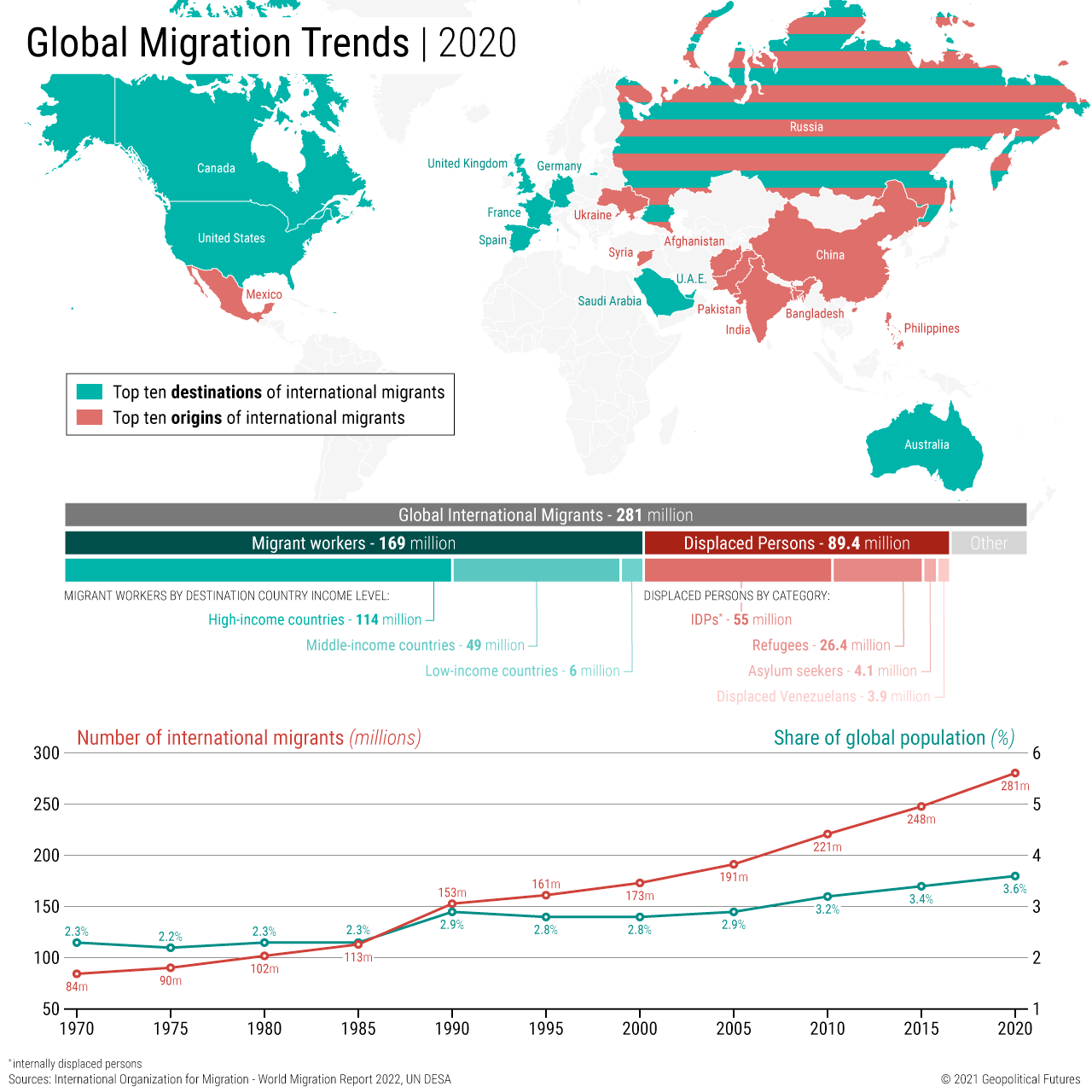Broadly speaking, there are two main drivers of migration: the search for economic opportunity, and displacement by violence, insecurity or political events. It’s no surprise, then, that the top destinations of international migrants are high-income countries, such as the United States and parts of Europe. From their new countries, migrant workers send home enormous sums of money – $702 billion globally in 2020, of which $540 billion went to low- and middle-income countries. For many recipient countries, remittances are vital in supporting the economy.
While migrants account for only 3.6 percent of the global population, they can have an outsize impact on domestic and geopolitical affairs. Particularly now, many high-income economies are struggling with economic and social pressures in the wake of the pandemic. As a result, they are ill-prepared to receive migrants, who often require some level of support upon arrival. Migrant inflows in large numbers can spark domestic unrest or even international confrontations over burden-sharing.




 Special Collection – The Middle East
Special Collection – The Middle East